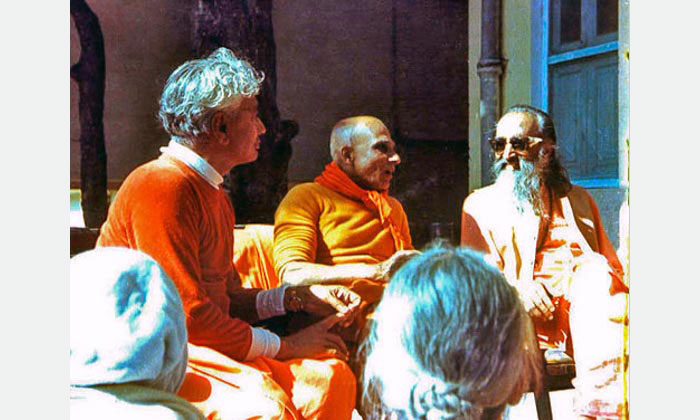Meditation According to the Upanishads - 6. Swami Krishnananda.
--------------------------------------------------------------------------------
Thursday, March 11, 2021. 10:21. AM.
(Spoken on January 14th, 1973)
Post-6.
---------------------------------------------------------------------------------
The Vaishvanara aspect of this analysis receives a detailed and elaborate treatment in the fifth chapter of the Chhandogya Upanishad, known as the Vaishvanara Vidya, wherein the glory of the Supreme Being is described, the meditation upon which is said to burn up all sins. In an analogy of this Upanishad, as fire burns cotton into ashes leaving no residue whatsoever, meditation on the Vaishvanara burns up all samskaras, all impressions of the mind, all sins and defects, and makes one Self-realised. From the description of the Vaishvanara given to us in the Chhandogya Upanishad we can also infer the conditions of Hiranyagarbha and Ishvara, which are not specifically mentioned but are implied therein.
Hence, the method of meditation in the Upanishads is primarily a juxtaposition of the objective and subjective sides in order that the two may be brought together into unison in the Universal state, and the Universal may be meditated upon. In order to understand what exactly is the meaning or the implication of the Mandukya Upanishad, you have to read, if you have time enough, the Karikas of Gaudapadacharya on the Mandukya Upanishad; or, if you have no time to read such a lengthy treatise, at least read a very short exposition of it in sixty-two verses given by Sureshvaracharya, known as Pranava Vartika, also called Panchikarana Vartika. How the individual is to be set in tune with the cosmic is described there. Sureshvaracharya tells us to abolish the perception of difference, and regard the individual waking as the cosmic waking. This is what he says.
Thus, the Upanishads give us a purely philosophical, analytical, mystical and spiritual method of contemplation by a denial of diversity through a contemplation of the totality of things. The Mandukya, Taittiriya and Aitareya Upanishads are specifically useful for this type of meditation. An elaborate commentary on this is to be found in the Chhandogya and Brihadaranyaka Upanishads, as I mentioned, one giving us what is known as the saprapancha view of things, and the other giving us the nishprapancha view of things.
The Chhandogya Upanishad gives us the saprapancha view of Reality, which means to say, Reality as interpreted in its relation to the cosmos. This is called the saprapancha view. Saprapancha means ‘with prapancha, with the cosmos’. The various factors of the Supreme Being’s relation to the cosmos are described in the Chhandogya Upanishad. But in the Brihadaranyaka Upanishad we have the nishprapancha view of Reality, where Reality is described as it is in itself without any kind of relation to the cosmos, or to anything whatsoever. The Chhandogya and the Brihadaranyaka Upanishads form complimentary teachings for us, and they are wonderful expositions of the secrets already given in a pithy form in the Mandukya Upanishad.
To be continued ....
=========================================================================



.jpg)

Comments
Post a Comment